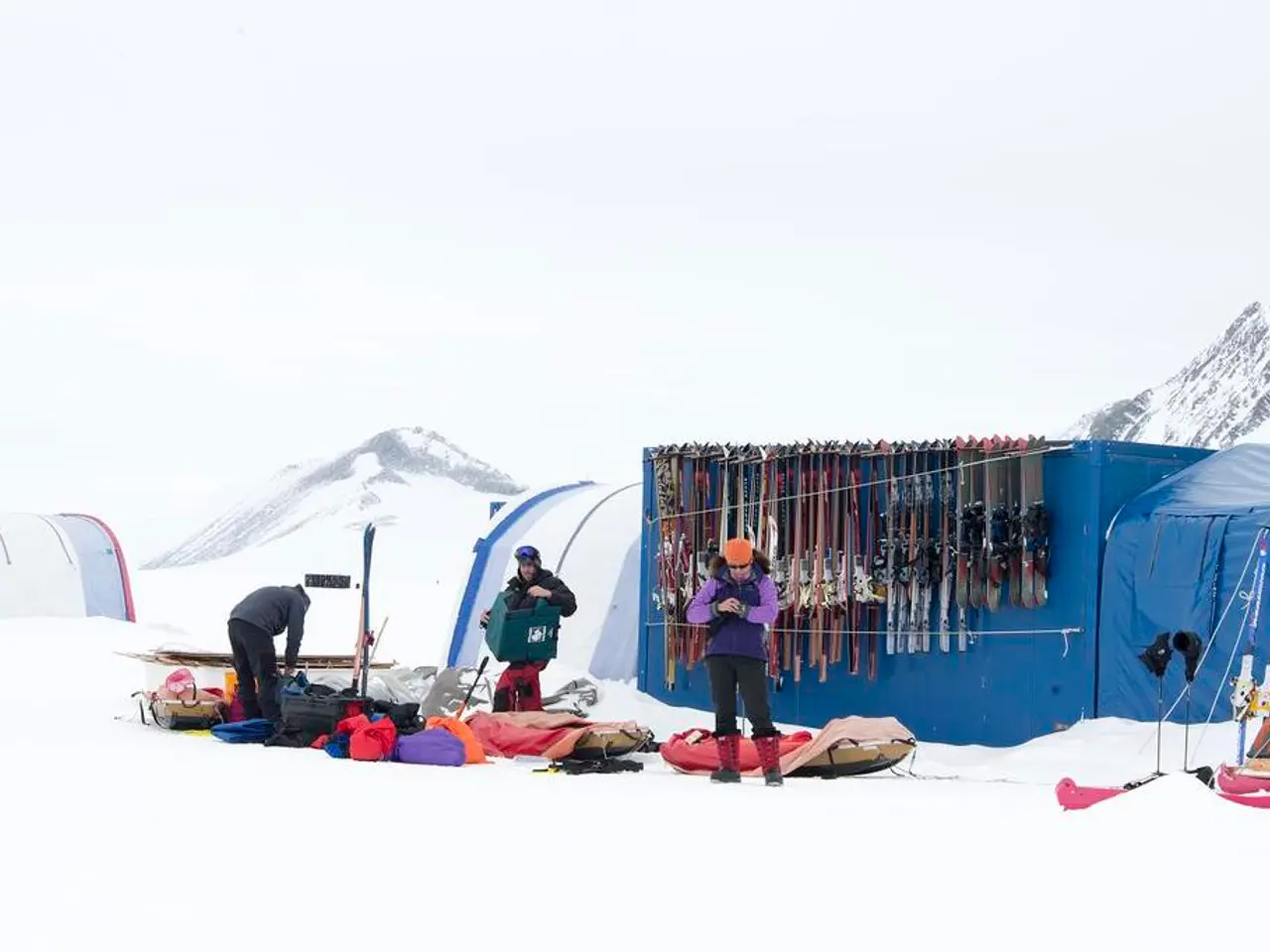Warn of Avalanches in Valley Floors This Springtime
Headline: Increased Avalanche Risk in New Zealand's Alpine Areas This Spring
This spring, New Zealand's Southern Alps are facing an elevated risk of avalanches, especially those running to the valley floor. The reason for this heightened danger lies in the Persistent Weak Layer (PWL) in the snowpack and recent significant snowfall and storm conditions.
In the past few weeks, a classic westerly storm deposited over 60 cm of fresh snow in the west and 30 cm in the east, contributing to the increased avalanche risks. This heavy snowfall, combined with unstable layers, has made key alpine areas like the Upper Hollyford and Cleddau Valleys particularly susceptible to avalanching. Recurring avalanches in these regions have already caused significant damage, flattening bush and sweeping vegetation.
To ensure safety, trampers and hunters are urged to take several precautions.
Firstly, avoid valley floors and avalanche-prone slopes, especially after heavy snowfall or storms. These areas are at an increased risk of large avalanches.
Secondly, check current avalanche forecasts and local DOC alerts before setting out. These resources provide critical safety information tailored to specific regions.
Thirdly, carry appropriate avalanche safety gear, such as a beacon, probe, and shovel, and know how to use them.
Fourthly, inform others about plans and expected return times for remote trips.
Fifthly, be aware of rapidly changing weather conditions, particularly in alpine areas like Mount Taranaki where weather can shift quickly and affect snow stability.
Hunters should also consult updated DOC maps and control plans to avoid zones impacted by ongoing operations or hazardous conditions.
The heavy rainfall that has already soaked the snowpack is expected to continue, increasing the risk of unstable conditions. A cautious approach to any valley travel is recommended over the next couple of weeks.
In conclusion, the heightened avalanche risk this spring is primarily due to heavy, fresh snow combined with existing unstable layers. Trampers and hunters must exercise increased caution in affected backcountry and alpine valleys. For the latest information and safety guidelines, visit www.avalanche.net.nz.
[1] Avalanche.net.nz (2022). Avalanche Bulletin. [Online] Available at: https://avalanche.net.nz/bulletin
[2] MetService (2022). Heavy Snowfall Warning. [Online] Available at: https://www.metservice.com/warnings/heavy-snow-warning-western-north-island
[3] DOC (2022). Taranaki Weather. [Online] Available at: https://www.doc.govt.nz/parks-and-recreation/places-to-visit/north-island/taranaki/things-to-do/taranaki-weather/
[4] DOC (2022). Hunting Regulations. [Online] Available at: https://www.doc.govt.nz/conservation/recreation/hunting/regulations/
[1] As the weather improves for outdoor-living and home-and-garden enthusiasts, individuals planning activities in New Zealand's alpine areas should consider the ongoing elevated avalanche risk this spring.
[2] To maintain a safe lifestyle, sports enthusiasts, particularly trampers and hunters, should be cautious in areas like the Upper Hollyford and Cleddau Valleys, where large avalanches may occur after heavy snowfall or storms.




